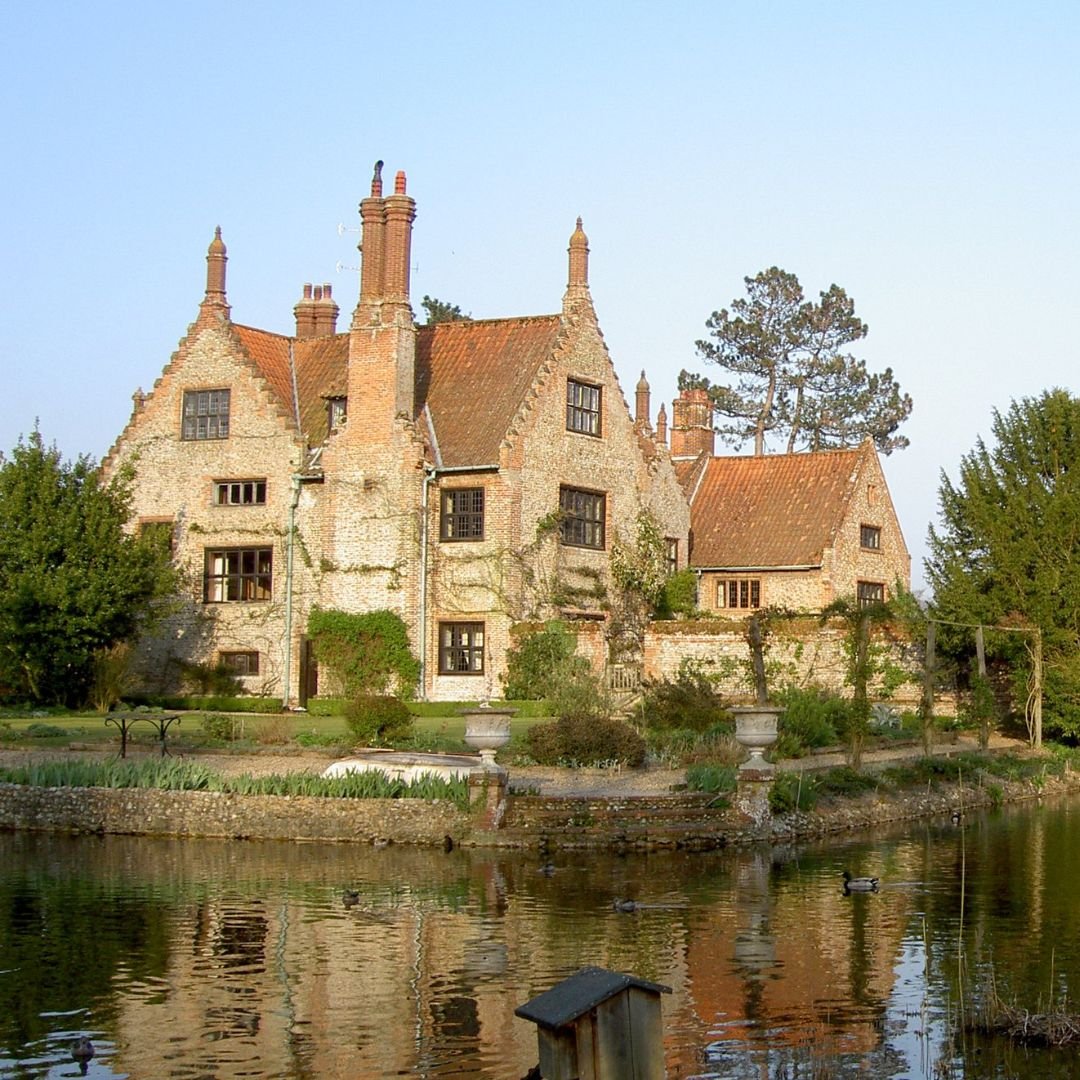Hindringham Hall: Grade II* listed Tudor House in Norfolk
Hindringham Hall is a stunning Grade II* listed gem in Norfolk.
Hindringham Hall is the most delicious little moated manor house straight out of a story book.
It features a beautiful medieval moat and fishponds, working walled vegetable garden, formal and informal borders wrapped around a brick and flint Tudor Hall.
Hindringham Hall was built by Martin Hastings, a courtier in the service of Henry Fitzroy, 1st Duke of Richmond and Somerset, the illegitimate son of Henry VIII by his mistress Elizabeth Blount.
The current owners have developed the stunning gardens over the past 30 years, during that time, Roman and medieval pottery has been discovered on the site.
The scenic moat dates from around 1150 - its water level is controlled by sluice gates connected to the River Stiffkey, which runs through the grounds and was diverted to create the moat.
The moat itself covers one acre and contains an area of one acre where the Hall stands.
Both the stone bridge, which was built over the moat, and the house itself date back to 1538..
The house was built by a courtier who had got rich in the service of Henry VIII’s illegitimate son Henry Fitzroy.
Stone for the Tudor Hall was taken from local monasteries being suppressed by Henry VIII, particularly from Bingham Priory, just a mile or two north.
The entrance is through a two-storey porch of flint and brick, with stone dressing on the ground floor.
The hall interior is largely the result of a Victorian restoration, but the originally buttery wall remains, with a screens passage and a single-storey hall at the heart of the building.
A wide Tudor staircase rises from the ground floor to the second floor.
The interior is an atmospheric space, with exposed timber beams and inglenook fireplaces.
The tall windows contain old glass panes, identifiable by their distorted surfaces, and the window mullions are made of oak.
The Hall has remained externally unaltered since Hastings had it built.
Hindringham is not only beautiful, but a very peaceful place, favoured by wildlife and especially the bird community.
There is a lovely tea room where drinks and cake are served from pretty bone china, and tables are set outside if the weather is favourable.
There is a great opportunity to take some proper 'me' time when visiting this truly tranquil and restful garden.
The garden is open regularly from spring through autumn, and the Hall itself is open on a few specified dates each year.
The garden was actually shortlisted for the Historic Houses 2020 Garden of the Year award!
The property and gardens, which are often open to the public on selected months in the year, have raving reviews on TripAdvisor.
A recent visitor said: “We spent about 90 minutes wandering through the gardens and round the ponds which are wonderful.
”The hosts were friendly and chatty making us feel at home in their home, the tea room is definitely worth a visit too.”
Another person added: “Tasty cake & drink to finish. Last minute decision but well worth the drive from Great Yarmouth.”
Before the Norman Conquest, the manor of Hindringham was held by the Bishop of East Anglia, based at North Elmham and then at Thetford.
In 1094, the estate was granted by the Bishop to the monks of Norwich Priory.
After the Priory was suppressed by Henry VIII the estate passed to the Dean and Chapter of Norwich Cathedral.
The house was leased to tenants for several centuries after it was built and fell into a state of serious disrepair.
It was in a state of complete dereliction by 1900 when it was rescued by Gerald Gosselin, a wealthy silversmith.
Gosselin restored the house and refurnished the interior in Arts and Crafts style.
Gosselin was confined to a wheelchair so one of his additions was a manual lift.
Just around the corner from Hindringham Hall is another beautiful listed building - a Parish church dedicated to St Martin.
Dating from the 14th century, it stands prominent and tall behind a long line of red-roofed flint cottages.
A wall separates the churchyard from the six-foot drop to the road. The chancel is offset to the south against the nave.
The font dates from the 15th century and is decorated with a Crucifixion, Instruments of the Passion and a Holy Trinity symbol along with heraldic shields.
The church also has an ancient chest which is thought to be one of the oldest in England, dating from the end of the 12th century.
If you’d like to visit, the church’s address is: 36 The St, Hindringham, Fakenham NR21 0PR.
If you enjoyed this blog post, please follow Exploring GB on Facebook for daily travel content and inspiration.
Don’t forget to check out our latest blog posts below!
Thank you for visiting Exploring GB.


















